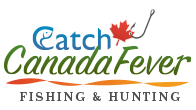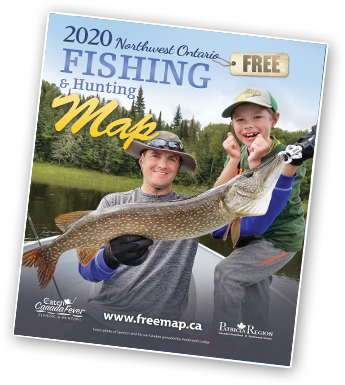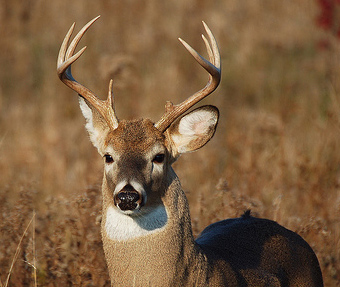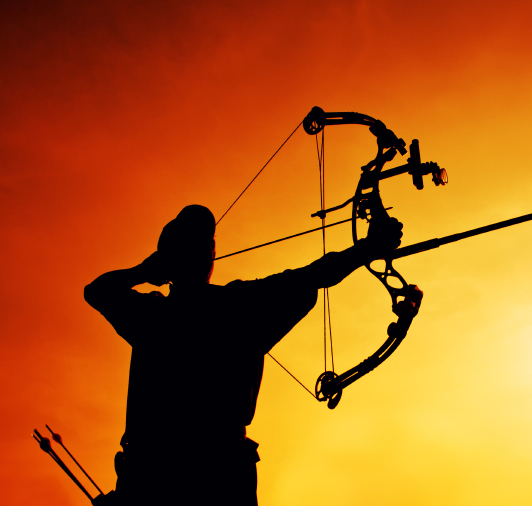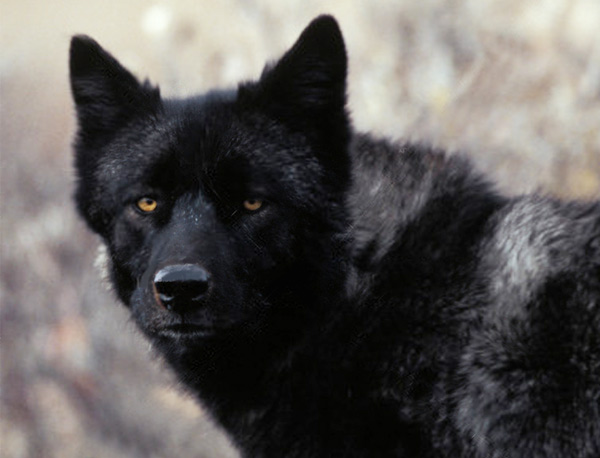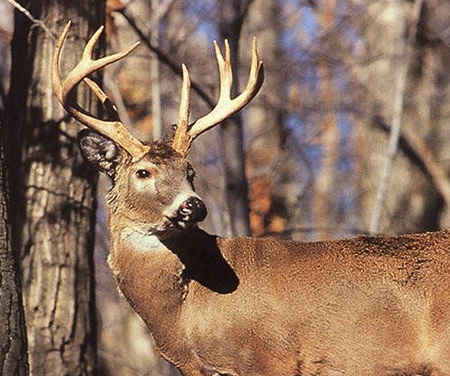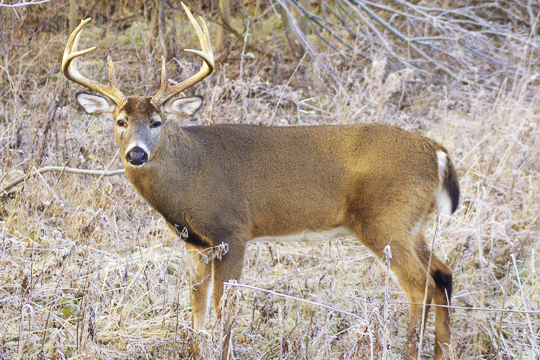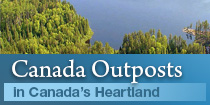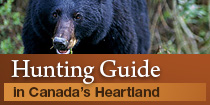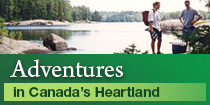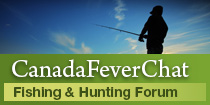Ontario Trophy Moose Hunting
Ontario trophy moose hunting is the adventure of a lifetime. Imagine you are trophy moose hunting alone in Ontario’s great wilderness. You have been sitting in a tree stand near a marsh for a couple hours, just waiting for a sign that a trophy moose is near. In the distance you hear a call- so you call back and hold your breath, just waiting for the Ontario trophy moose to come in your direction. Finally, you see it. A great big trophy bull moose comes out into a clearing by the marsh. Your adrenaline starts going. You slowly move your gun sight towards your eye. You breath in and out, pulling the trigger. You hit your target. The trophy moose runs a bit, and finally drops to the ground. Your first Ontario trophy moose hunting experience! You run up and tag your trophy moose, then take a picture. If this exciting hunting experience sounds like something you would like to experience- read more to learn all about Ontario trophy moose hunting, why trophy moose, and how to pick an outfitter.
All About Ontario Moose
Moose are the largest species in the deer family, making them excellent trophy game for hunting. The vary in color, from brown to dusty black. Calves are generally a light rusty color. They have long faces with bells that hang under their throat. Only male moose have antlers, which can vary in size and shape. The trophy moose antlers can spread up to 6 feet from end to end. The average moose weighs approximately 1000 pounds, and the average height is about 6-8 feet. Typically an Ontario trophy moose will live a lifespan of 15-25 years. Moose are herbivores and feed on aquatic vegetation as well as terrestrial vegetation. Generally, moose prefer to feed in higher grasses because it can be difficult to lower their heads to the ground. They are slow moving creatures, unless frightened or angered and prefer to be solitary rather in a herd. Trophy moose are large mammals, and require about 9770 calories a day. Predators of Ontario moose include humans, wolves and bears. Moose can be very protective of their young, and it can be dangerous to come between a cow and a calf. Canada has the highest population of moose in the world (estimated 500,000 – 1,000,000) with most of them being in Ontario. In the Patricia Region, the most common moose types are the Western Moose and the Siberian Elk.
Moose Throughout the Seasons
Ontario spring is the start of new life for moose. Expecting cows give birth in the spring. Twins are fairly rare among moose, with determinants being the moose population, the food supply and the health of the cow. Calves are in the most amount of danger in the first few months of their lives. Predators such as bears and wolves pose a threat to the small calves. Cows stay with the calves until the next mating season begins, and defend their offspring from threats. The lighter color of the calves help them camouflage better among the grass, helping them avoid unwanted predators. Moose will rub against trees to help shed some of their winter fur as the weather gets warmer. Many moose will move to wetlands and begin feeding on new shrubs during these months.
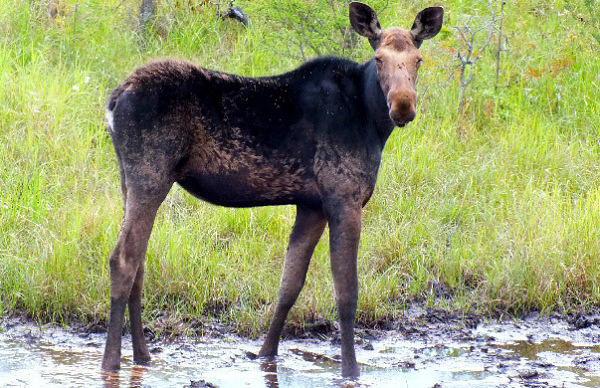 Ontario summers are less than enjoyable for moose. Moose prefer a cool climate and spend a large amount of their time trying to keep cool in the water. The water helps keep them cool as well as protects them from bugs.
Ontario summers are less than enjoyable for moose. Moose prefer a cool climate and spend a large amount of their time trying to keep cool in the water. The water helps keep them cool as well as protects them from bugs.
Autumn is the mating season for Ontario moose. Moose become very active during the fall months. Trophy bull moose try to rid the velvet from their antlers, and challenge each other for territory and mating rates. These are also the only months you may see a trophy bull moose, cow and calf together at once. However, chances are the calf belongs to another moose and the bull intends on mating with the cow. Prime bulls are bulls with the largest antlers. These are the bulls that make great trophy moose. They generally get mating priority. Bulls with smaller antlers may not be able to mate until late in the season. As the weather gets colder, the trophy bull moose will shed their antlers and prepare for winter.
A winter in Ontario is the most difficult season for moose. Vegetation is limited, and moose often feed on tree branches as well as tree bark. Moose can also often be found in winter on Ontario roads, where they lick the road salt to help aide their diet. Winter is long and moose may lose up to thirty percent of it’s body weight by the time spring arrives.
Ontario Trophy Moose Habitat
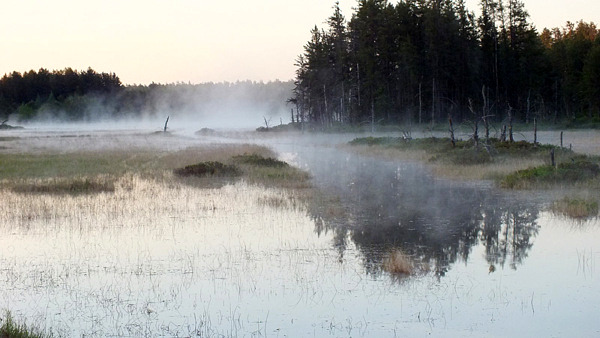 The boreal forest in Ontario is an ideal habitat for hunting for trophy moose. Ontario forests are filled with wetlands, rivers, lakes and bogs. Ontario moose are excellent at swimming and can actually stay submerged under water for 30 seconds or more. Moose are attracted to water for the aquatic vegetation it provides as well as relief from the heat and bugs in the summer months. Along with the boreal forest, Ontario also has many rock ridges and wide open meadows which are ideal for moose. When the temperatures are high, besides taking a dip in a wetland, trophy moose will also seek shade under trees. Logged areas are also great for moose. Moose will eat the budding vegetation in the logged area, however once there is a bit of regrowth they tend to move elsewhere.
The boreal forest in Ontario is an ideal habitat for hunting for trophy moose. Ontario forests are filled with wetlands, rivers, lakes and bogs. Ontario moose are excellent at swimming and can actually stay submerged under water for 30 seconds or more. Moose are attracted to water for the aquatic vegetation it provides as well as relief from the heat and bugs in the summer months. Along with the boreal forest, Ontario also has many rock ridges and wide open meadows which are ideal for moose. When the temperatures are high, besides taking a dip in a wetland, trophy moose will also seek shade under trees. Logged areas are also great for moose. Moose will eat the budding vegetation in the logged area, however once there is a bit of regrowth they tend to move elsewhere.
Moose Hunting Rules and Regulations
There are many rules and regulations that need to be looked into before planning an Ontario trophy moose hunting trip. To go Ontario trophy moose hunting as a Canadian resident, you will need to apply for a moose tag. It is a good idea to apply a couple years in advance as their is limited amount given out each year. If you are a non-resident, you receive your tag through an outfitter. Ontario moose may only be hunted using a firearm. The definition of firearm includes bows, shotguns, rifles and muzzle-loading guns. When hunting, know that it is illegal to use any product that contains bodily fluids such as urine, feces, saliva, etc. This is important because the use of these products may spread disease. Many people that come on an Ontario trophy moose hunting trip want to go party hunting. Party hunting is only permitted in Ontario during the open season, and has many more conditions and regulations which must be followed. Hunting regulations are important to follow, and if you are planning an Ontario Trophy Moose Hunting trip it would be a good idea to go to the government site which outlines all of the regulations in detail. You can read more details at http://www.mnr.gov.on.ca/stdprodconsume/groups/lr/@mnr/@fw/documents/document/239848.pdf as well as http://freemap.ca/hunting_reg.php .
Archery Vs. Rifle Hunting
When hunting in Ontario, the type of firearm you choose to use can make a huge impact on your trip. For example, in Ontario bows and rifles have different open seasons for moose hunting so you may need to plan your trip accordingly. Each firearm also requires different techniques and different distances from the game.
 Archery hunting requires a great deal amount more skill than rifle hunting. When archery hunting, you need a good bow and a clear state of mind. When archery hunting it is necessary to be less than 42 yards to ensure a clear shot, as compared to a rifle which allows you to be as far as 600 yards. Being that much closer to a live moose can be very scary and exciting all at once. One of the benefits of archery hunting in Ontario is that the archery season generally opens up sooner. With no gun shots to scare the animals away, you can hunt a lot more discreetly. However, Archery can be more expensive than rifle hunting. You need to have a good bow that fits, arrows, sight pins, etc. Archery also requires a bit more practice. You need to learn your bow inside out, how hard to pull it, how to aim it, and more.
Archery hunting requires a great deal amount more skill than rifle hunting. When archery hunting, you need a good bow and a clear state of mind. When archery hunting it is necessary to be less than 42 yards to ensure a clear shot, as compared to a rifle which allows you to be as far as 600 yards. Being that much closer to a live moose can be very scary and exciting all at once. One of the benefits of archery hunting in Ontario is that the archery season generally opens up sooner. With no gun shots to scare the animals away, you can hunt a lot more discreetly. However, Archery can be more expensive than rifle hunting. You need to have a good bow that fits, arrows, sight pins, etc. Archery also requires a bit more practice. You need to learn your bow inside out, how hard to pull it, how to aim it, and more.
Rifle hunting also requires skill. When rifle hunting in Ontario, you need to have a good eye. Generally people rifle hunting will sit in tree stands and make long shots. Rifle hunting can be a lot more accurate, especially if you have a good gun and sight. Many archers hit the moose but only wound it, allowing it to run away and die a slow death. Sometimes it is never found, which can be a waste. Rifle hunting has more power and accuracy and generally ends in a kill.
Moose Dressing
Moose dressing may be the hardest part of hunting overall. Now that you finally have your Ontario trophy moose, what do you do with it? You will need to take part in moose dressing. Moose dressing can be messy, but doing it right can help preserve your meat. When you first kill an animal, approach it with caution. Trophy Moose are not small animals, and you would not want one to get back up and attack you. Approach it from behind to be sure. Once you are positive it is dead, you should tag it right away. This in an important step, as legally you must tag your kill immediately. After this, the first thing you will want to do is cool down your Ontario trophy moose. Clear a nearby working area so you have room to move around. You may need to move the moose. Move the animal onto it’s back, and spread the legs.
The next step will be to bleed the trophy moose. Use a sharp knife to cut into the shallow cavity at the bottom of the throat and cut across the main blood vessels with a wide, deep crosswise cut. Blood will flow out of the jugular veins which run from the heart to the head. After that, use a sharp knife to cut starting just below the ribcage down the middle of the carcass up to the base of the jaw. Cut through the muscles of the ribcage and higher to expose the windpipe and gullet. Cut the exposed breastbone using two axes. Use one as a cutter and the other as a hammer, cutting from the breastbone up to the top of the ribs. Pull the legs apart to open up the chest cavity. Now cut through the abdominal muscles, and expose the stomach and intestines without puncturing them. As you cut towards the pelvic area, be careful not to puncture the bladder. Use the two axes again to split the pelvic bone by stay away from the moose’s genitals. Do not cut the urinary tract.
The next part of the moose dressing is the most important. You will need to separate the anus away from the carcass and pelvic area.You must be very, very careful to ensure no damage is done to the intestines and urinary tract, as any leakage would taint the meat. Once you are done with this part, use your knife to cut a circle through the skin about an inch or two away from the anus.Then use your knife to cut through the muscle tissue to the inside of the pelvic bone, towards the top of the pelvic bone, to free the anus and rectum. Once they are free, pull the anus, rectum and lower intestine from the cavity. Now that the anus and rectum are removed, roll the moose to lower ground and allow the intestines and stomach to fall to the prepared ground.To remove the neck and chest cavity organs, start by pulling the heart and lungs out toward the ground. Cut any remaining tissue that is still holding the diaphragm to the chest wall. Roll the moose to drain as much blood as possible.
Now that all of the organs are out, wipe it clean using an absorbent material. Avoid using water, which may possibly contain meat-spoiling bacteria. Now you need to decide what you will do with the carcass. You will need to cool it still, which can take hours. A good idea is to hang it, which allows air to get at it from all sides. Another good idea if you are not able to hang it would be to get it off the ground in some way, whether it’s be placing it on logs or some other base.
Other Trophy Species
There are several other trophy species available for hunting in Ontario. Trophy Whitetail Deer are plentiful throughout Ontario. A male deer, also known as a buck or stag, can weigh up to 290 pounds, and in rare cases more. Females, or does can weigh up to 200 pounds. Bucks regrow their antlers every year. The number of points on a trophy deer’s antlers can give you an indication of how old the buck is. Deer generally get larger the farther the way they are from the equator. Because of this, Canada and Ontario have some of the largest trophy deer in the world. Deer are herbivores, feeding mainly on chutes, grasses and other plant-life. Deer often have trails they travel, which can help in hunting them.
Trophy wolves average around 100 pounds in Ontario. They vary in colour from white to pure black, most of them being greyish. Hunting for trophy wolves requires a scent eliminator as wolves are very cautious as well as keeping movement to a minimum because wolves have a great sense of smell, hearing and sight. Generally, Ontario wolf hunting is done in the winter months. There is currently a healthy population of wolves in Ontario, and trophy wolf hunting has been gaining popularity.
Trophy bears are another type of big game available for hunting in Ontario. Ontario has some of the largest black bear populations in all of North America. Trophy bear hunting seasons run from mid-August into October. During the open season, bears are scavenging and eating to gain weight for the long winter hibernation. Ontario berries are a large part of there diet, which can make ideal locations for bear traps. Some hunters use dogs to help seek out trophy bear in the area. Ontario trophy black bears can be dangerous and present a challenge, but the thrill of the hunt is memorable.
Finding an Outfitter
Finding an Ontario outfitter to suit your needs is essential to having a safe, happy stay while Ontario trophy moose hunting. There are many outfitters across the Patricia region that offer trophy moose hunting as an activity. Each hunting outfitter will have different sizes of property that are available to hunt on. The size of the hunting property is important because the more coverage of the area you have, the better chance you will at coming across an Ontario trophy moose. Also, take into consideration the type of property the hunting outfitter offers. Marshes, wetlands and streams are great for Ontario trophy moose hunting. Many hunting outfitters offer guide services. Ontario outfitter guides have an extensive knowledge of trophy moose. They know the habits, feeding spots, and streams the moose frequent. Ontario Trophy moose hunting guides are very experienced hunters that have quite often grown up in the area or have been hunting the area enough times to help get you your trophy moose. Another thing to consider when choosing an Ontario outfitter is how you would like to hunt for your trophy moose. Will you require a boat to search the shorelines? Or will you take part in vigorous hunting (hiking and stalking) to find your Ontario moose? Or maybe you would prefer a more relaxed hunting style, and you would like to look into an outfitter that offers hunting tree stands. Perhaps you will want to mix it up, and give all three a shot. Either way, it is important to see what different outfitters offer. You can search for Ontario outfitters on the our site at http://freemap.ca/outfitter_search.php

